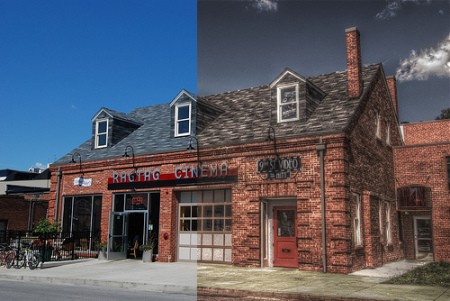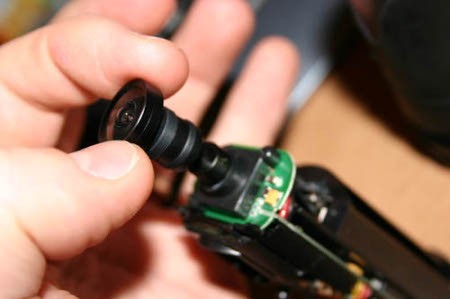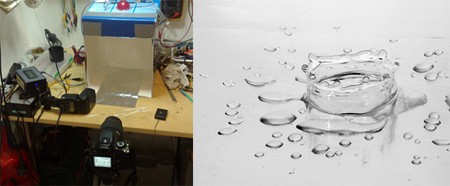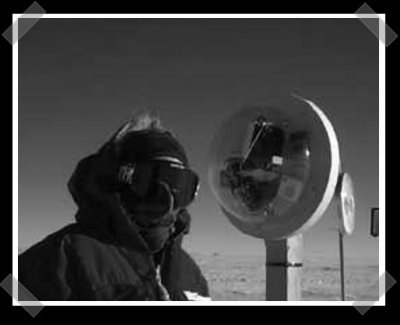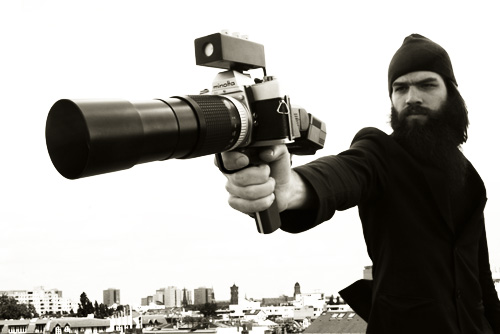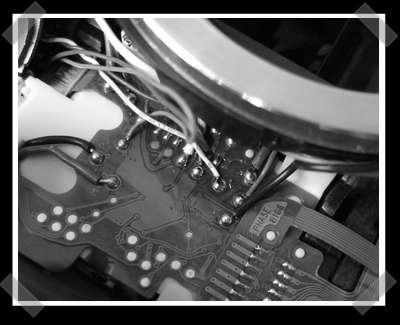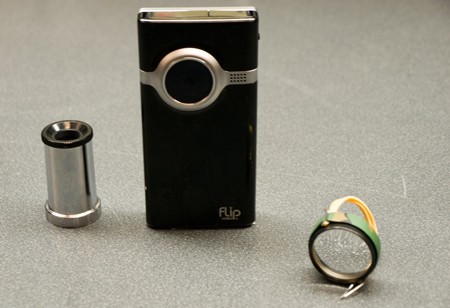
Flip cameras are fun and easy to use, but not particularly versatile. If you’ve had poor results at macrophotography with a Flip, you might be interested in these DIY lenses. One is macroscopic lens for taking photos and video of small things, and the other is a microscope for even smaller things.
To construct the macro lens, you’ll need a pair of binoculars, some rubber bands and paper clips. Simply remove the lenses from the front of the binoculars, complete with the plastic casings that hold them. Thread a rubber band folded in half to the plastic casing and hold it in place with small segments from the paper clip. Now place the lens in front of the Flip’s lens and secure the rubber band around the flip.
The microscope’s eyepiece uses no such attachment method, simply hold it in front of the Flip. The same process can’t be used here because getting the proper focus requires it to be held at varying distances from the camera, not flush against it like the macro lens. In any case, it’s any easy mod that should have you taking pictures of bugs and other tiny things in no time. Look after the break for video of the lenses in action.

